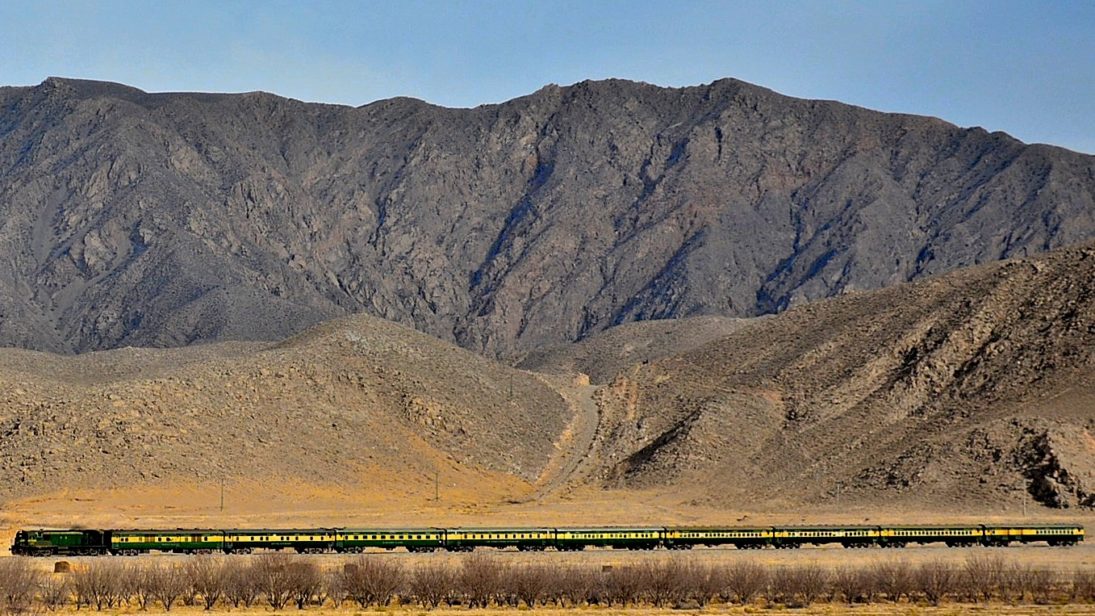
The China-Pakistan Economic Corridor (CPEC) has immense importance, not only for signatory states, but also for the region. Although the project is aimed at enhancing bilateral trade, transit, and economic cooperation between China and Pakistan, it has enormous geo-strategic and geo-economic implications, especially for Baluchistan.
Pakistan and China cherish time-honored diplomatic and military relations. Pakistan Prime Minister Nawaz Sharif has reiterated that their ties are “higher than the Himalayas and deeper than the deepest sea in the world, and sweeter than honey.” But with this project, the two countries are entering into a new era of economic partnership.
CPEC will connect Pakistan’s Gwadar port to the autonomous region of China, through a network of highways and railways, as well as pipelines to transport oil and gas. However, this project goes beyond roads and railways. It also encompasses investments in the energy sector, telecommunication (an optical fiber cable linking the two nations, worth $44 million), transport infrastructure, and intelligence sharing between the two countries. Gwadar will be connected to Kashgar through multiple routes – eastern, western, and central.
Table: Detail of investment in different sectors
| Sector | Est. Cost in Billions of Dollars |
| Energy | 33.79 |
| Road | 5.90 |
| Rail | 3.69 |
| Mass Transit in Lahore | 1.60 |
| Gwadar port | 0.66 |
| China –Pakistan fiber optic | 0.04 |
| Total | 45.69 |
Baluchistan is the largest province of Pakistan in terms of area, and the smallest in terms of population. It has a tribal structure, and is the least developed when measured against the socio-economic standing of other provinces. Baluchistan has abundant natural resources, but its unskilled population is an obstacle to exploiting those resources. According to a recent report, it has a 26 percent literacy rate, with thin urbanization, and a 4 percent rate of unemployment.
Baluchistan is of unique importance to CPEC. This project will provide new opportunities for Baluchistan’s people. The Gwadar port would help enhance trade in the region, especially with Central Asia and China. CPEC’s early harvest projects are expected to be completed by December 2017, which include Gwadar airport, a hospital, expressway along Gwadar East Bay, and a coal-based power plant. The mining sector can contribute towards reducing unemployment in local areas, as can small and medium-sized industries as well as road construction. For instance, the Frontier Works Organization has constructed 502 kilometers of roads in Baluchistan, despite huge challenges of weather and insurgency.
However, development should not be Gwadar-centric but spread evenly throughout the province, so as not to exacerbate existing grievances in Baluchistan. The provincial government should devise policies on how best to leverage resources towards poverty reduction, and creation of new jobs for the local population. Under CPEC, 29 industrial parks and 21 mineral processing zones are going to be established throughout Pakistan. The people of Baluchistan should form 100 percent of the labor force in these zones, because hiring people from outside could lead to another conflict. The government should make sure that the CPEC plan to add 16,000 MW of electricity to the national grid should include the 1250 MW that Baluchistan is short of. The trade route, which will be about 3,000 km, will attract massive traffic in future. Baluchistan should get a lion’s share of these revenues, since Gwadar port, the center stage of CPEC, is located there.
The success of CPEC depends on the restoration of peace in Baluchistan. To this end, the government of Pakistan is working persistently on a two-pronged strategy. The first strategy is the use of military power to subdue the decades-old insurgency in the province, as part of the National Action Plan. This strategy has proven successful, as there has been a sharp fall in terrorist incidents in the province, besides an overall decline nationally.
The other strategy is to promote the process of reconciliation. The government’s plan, Pur Aman Baluchistan, proposes bringing estranged Baloch into the mainstream. The government has seen some positive signs, as exiled Baloch leaders such as Brahmdagh Bugti, leader of the Baloch Republican party, have showed willingness to engage. The recent surrender by militants from banned Balch organizations also indicates the success of the reconciliation process, made possible through the support of tribal channels. The Baluchistan government has announced an amnesty scheme for those militants who are willing to surrender and give up violence. These efforts need to be reinforced and augmented through more steps, keeping in mind the ground realities. Pakistan should also be transparent and provide evidence to the world about alleged foreign – specifically Indian – involvement in Baluchistan. Pakistan initiated this process by presenting a dossier to the United Nations in late 2015.
CPEC has the potential to convert Pakistan into a transit trade hub. It will reduce the distance between China and the Gulf States from 16,000 km to 2,500 km, to transport oil faster. Concomitantly, apart from the boost in tourism, Pakistan would also benefit from transit of Chinese goods via its territory, and get access to the Chinese market. Thus, the development of this project is in the interest of both states. Baluchistan being CPEC’s focal point, the Pakistan government must ensure that the Baloch people are fully included in the project, and get their due share of benefits.
***
Image: Umer Malik, Flickr


